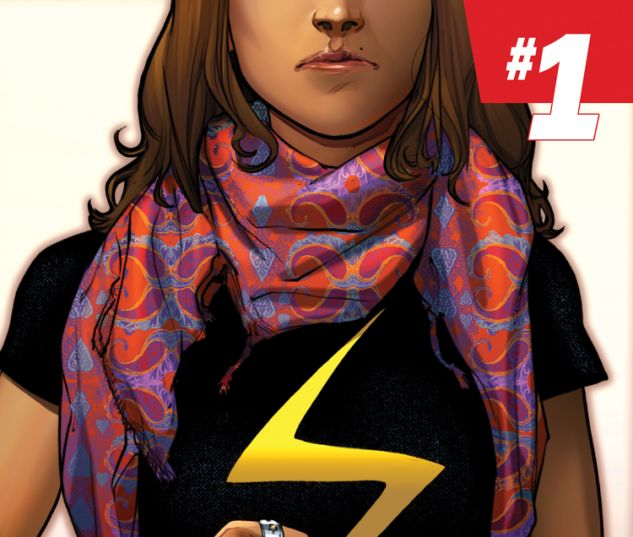
“Kamala is the first Muslim character to headline a Marvel Comics series. She struggles to figure out where she fits in with other teens in her New Jersey neighborhood while staying true to her family, culture and faith.” – Zoë DiGiorgio
Some of the most famous superheroes, including Captain America, Superman, Batman and Wonder Woman, come from a time known as the Golden Age of Comics. From the 1930s until the early ‘50s, comics, specifically superhero comics, became wildly popular.
While the world was at war, these comics gave Americans strong heroes to rally behind. Just more than 60 years later, the national landscape has changed. The country needs a new set of heroes, not muscular men in patriotic spandex, to suit our redefined national character.
Marvel Comics has ushered in a new era of diversity in the world of superheroes. Ms. Marvel is just one of many heroes to lead this new wave.
In February, Marvel broke the mold with its new Ms. Marvel series, which follows the heroic exploits of 16-year-old Kamala Khan. Kamala is in many ways a normal, geeky teenager. But when she’s not juggling typical teen drama — boys, parties and popularity — she’s struggling to adjust to her superhero status and find her identity as a Pakistani-American.
Kamala is the first Muslim character to headline a Marvel Comics series. She struggles to figure out where she fits in with other teens in her New Jersey neighborhood while staying true to her family, culture and faith.
Things don’t get much easier when Kamala discovers she has strange new powers. After blacking out and waking up in the midst of a mysterious fog, she realizes she can stretch her limbs, change her appearance and grow and shrink at will just like her hero, Captain Marvel, also known as Carol Danvers.
In the same way Spider-Man drew his motto from Uncle Ben, Kamala soon finds a sense of duty from a line in the Quran: “Whoever kills one person, it is as if he has killed all of mankind — and whoever saves one person, it is as if he has saved all of mankind.”
Though Kamala’s storyline is still relatively new, it has already received widespread critical acclaim. Many have praised creator G. Willow Wilson’s ability to create such a universally relatable heroine. Kamala’s quest to battle evil while fighting loneliness and self-doubt is appealing to teens regardless of cultural background.
In her review of Ms. Marvel #1 for Comic Vine, Jen “Miss J” Aprahamian wrote, “Kamala is not your average superheroine — she probably has a lot more in common with readers than most of the capes and suits in mainstream comics — and her stories seem like they’re headed in an exciting direction.”
While Kamala’s third appearance as Ms. Marvel comes out today, comic fans have other options for characters who represent diverse backgrounds. In 2011, half-black, half-Hispanic teen Miles Morales took over the mantle of web-slinger in Marvel’s Ultimate Spider-Man universe after the death of Peter Parker. Fans and critics praised the series for its interesting storylines as well as for providing a positive role model for children, especially children of mixed racial backgrounds.
Still, traditionalists criticized Marvel’s replacement of a historic character like Peter Parker as borderline sacrilegious and little more than an attempt at political correctness. Marvel Editor-in-Chief Axel Alonso responded to the criticism in an interview with Latinrapper.com, saying, “Simple fact is Marvel comics reflect the world in all its shapes, sizes and colors. We believe there’s an audience of people out there who is thirsty for a character like Miles Morales.”
With the success of Miles in the new Ultimate Spider-Man and Kamala in Ms. Marvel, Alonso’s prediction has proven true. It might be too soon to declare this a second Golden Age of Comics, but with the sudden explosion of superheroes from diverse backgrounds reshaping the comic book scene, this is a golden time to be a comic book fan.



